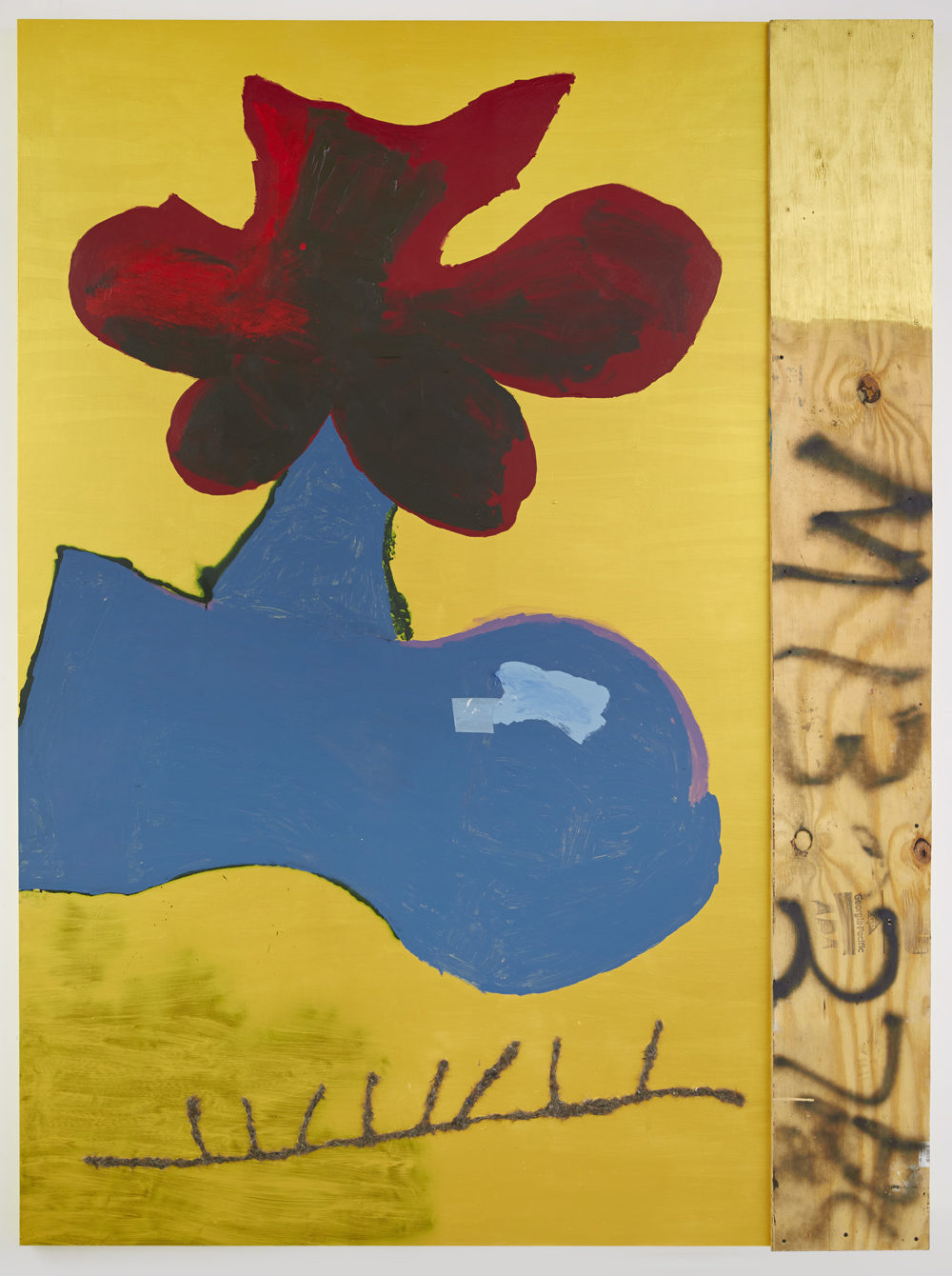
- Source: Kaleidoscope
- Author: Ross Simonini
- Date: Fall 2014
- Format: PRINT
Torey Thornton

Torey Thornton, Jump Over The Loose Rungs, 2014
Acrylic, metallic paint, cat hair, spray paint, wood, and collage on wood panel, 96 x 72 inches
When I visit his studio, Torey Thornton shares a list of self-imposed rules for painting. 1) Never use canvas, only wood or paper. 2) Work on paintings from a single orientation, never flip them. 3) Avoid working on prefabricated paper; Glue many small sheets of paper together to form large, tessellated grids instead. Slather paint on the back of the paper for support and liberally glue their seams until the surfaces warp and bubble like a topography map. When I ask Torey why he goes through all this work rather than buying bigger sheets of paper, he explains, “I’m trying to stay as raw as I can for as long as possible.” For Torey, the handcrafted paper patchwork is the beginning of the image. Similarly, when he paints on wood, he often assembles slatted wood panels until he arrives at a wooden box so sculpturally satisfying that he’s hesitant to paint it. In this way, all of his images are born from collage. Torn sheets of notebook paper, shopping bags, found signs and scraps of previous paintings are all cut and pasted so that each visual idea is interrupted just before it comes into focus.
But even when he’s simply applying paint without scissors, Torey thinks like a collagist. His paintings display the diverse spectrum of marks that paint can produce: a smooth swipe of acrylic rests alongside a craggy circle of nail polish, a casual smear of sparkling paint floats above a manic crosshatching of strokes – bouquet of styles. Sometimes these forms crowd together into an environment of debris. Sometimes they congeal into representation: a humid, summery landscape or a stout man wearing a hat. Sometimes they float independently, abstractly, in a field of white, like amoebas on a petri dish, each one seemingly painted by a different artist. It’s an approach to building a composition that recalls curation, which Thornton recently did for the first time this summer in the group show, “That’s the Neighbor, Always Dressing These Boulders in the Yard,” a display of raw painterly skill at The Suzanne Geiss Company, which included Brian Belott, Chris Martin, and Ted Gahl. One can read time in his mark making, whether “fast, slow or medium,” as Torey puts it. To explain, he gives the example of “a truck on fire.” In some cases this image might take several days to build, carefully rendering each door and flame and shadow, but the other times, he might decide to paint the same subject in a matter of seconds, too quickly for his illustrative hand to be of use, so that the marks on the canvas share only the most fundamental elements with the image in his mind.
As he speaks, Torey glides around his studio, a yawning space in the industrial corner of Bedstuy, Brooklyn. He arranges a stack of old, found fence posts from a garden bed. Each one is painted in richly colored patterns, which he intends to fashion into a painting for his mother – an idea that has been brewing in his mind for a month. The finished works appears in his current show at OHWOW in Los Angeles. Torey hoists a seven-foot sculpture, constructed from a wooden post, bent metal fencing, and his friend’s old winter jacket. It’s one in a series of weapon sculptures. Nearby, a bag of garbage, covered in holes chewed by mice, sways from the window. I ask him if it, too, is a sculpture and he explains, “No that was just a solution to a problem.”

